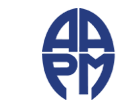| Question 1: When designing a neonatal x-ray technique chart, the physicist should:
|
| Reference: | ACR-SPR Practice Parameter for the Performance and Interpretation of Skeletal Surveys in Children, pp 4 – 6, 2016 |
| Choice A: | Use the same kVp as the corresponding children’s technique for the same unit. |
| Choice B: | Use the lowest kVp available on your x-ray unit for the tiniest babies. |
| Choice C: | Balance the need for contrast with dose. |
| Choice D: | Use Google. |
| Question 2: Ultrasound is a safe and cost-effective tool that can supplement or replace some exams of these types: |
| Reference: | Diagnostic Imaging of Infants and Children, Robert Wells, MD, pp 1380 – 1382, 2013; Neonatal Head and Spine Ultrasonography, Andrea Poretti, Thierry A.G.M. Huisman, editors, p v, 2016
|
| Choice A: | CT. |
| Choice B: | MRI. |
| Choice C: | Nuclear medicine. |
| Choice D: | X-Ray. |
| Choice E: | All of the above. |
| Question 3: As a part of on-going quality control, the physicist should support the staff in:
|
| Reference: | ACR-SPR Practice Parameter for General Radiography, pp 3 - 5, 2013; ACR-AAPM Practice Parameter for Diagnostic Reference Levels and Achievable Doses in Medical X-Ray Imaging, p 4; ACR-AAPM-SIIM Practice Parameter for Digital Radiography, p 8
|
| Choice A: | Conferring with radiologists regarding image quality and image artifacts. |
| Choice B: | Supporting administration’s efforts to appropriately train all technologists. |
| Choice C: | Providing relevant educational materials when requested and offering educational materials when relevant. |
| Choice D: | Developing or modifying technique charts as requested. |
| Choice E: | Supporting the QC committee’s efforts to track dose indices and/or DRLs and/or techniques. |
| Choice F: | All of the above. |
| Question 4: Which of the following isotopes may be used for both diagnostic and therapeutic purposes:
|
| Reference: | Cherry SR, Sorenson JA, Phelps ME, “Physic in Nuclear Medicine”, Elsevier Saunders, Philadelphia, 4th Edition, 2012, p 59-61
|
| Choice A: | I-125 |
| Choice B: | I-123 |
| Choice C: | F-18 FDG |
| Choice D: | I-131 |
| Choice E: | Tc99m |
| Question 5: Radioactive Iodine 131 is now more commonly administered in capsule form instead of liquid form for which of the following reasons:
|
| Reference: | Edward B. Silberstein, et al., Society of Nuclear Medicine Procedure Guideline
for Therapy of Thyroid Disease with Iodine-131(Sodium Iodide), 2012.
|
| Choice A: | To avoid radioactive shipping expenses. |
| Choice B: | To increase the drug’s effectiveness. |
| Choice C: | To satisfy state regulations. |
| Choice D: | To reduce radioactive material license fees. |
| Choice E: | To reduce inhalation of radioactive vapor by staff. |
| Question 6: In order to reduce the chance of a radioactive spill, which of the following actions is recommended when treating children with radioactive iodine capsules: |
| Reference: | Gary L. Francis, et al., Management Guidelines for Children with Thyroid Nodules and Differentiated Thyroid Cancer, THYROID, Volume 25, Number 7, 2015
|
| Choice A: | Prior assessment of pill-swallowing compliance. |
| Choice B: | Administration of a placebo. |
| Choice C: | Use of environmental and personal protection equipment. |
| Choice D: | Establishment of hot, warm and cold zones. |
| Choice E: | All of the above. |
